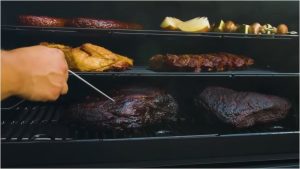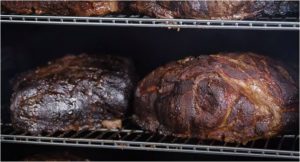Essential Tips for Keeping Warm in Your Tent This Winter: Layering, Eating, and More
Note: This article may contain affiliate links, which means if you make a purchase following our links won’t cost you extra, but we may earn a commission. Learn more
Keeping warm while camping in winter requires effective strategies. You need to ensure you are adequately prepared to face the cold nights in your tent. The key to staying warm lies in several tried-and-true techniques that outdoor enthusiasts rely on.
Dressing in layers is essential for maintaining body heat. Start with a moisture-wicking base layer, add a warm fleece as your mid-layer, and top it off with a waterproof and windproof jacket. This combination helps trap heat and allows you to adjust layers based on your activity level and the temperature. At night, changing into dry clothes before sleeping is vital, as damp clothing can lead to a significant loss of body heat.
Investing in a high-quality sleeping bag designed for low temperatures can make a considerable difference. Look for a sleeping bag with a hood to keep your head warm, as a lot of heat is lost through the head. Sleeping on two insulating pads instead of one can prevent heat loss to the ground, a common issue during cold nights.
Another useful tip is to fill a water bottle with hot water and place it near your core area to provide extra warmth throughout the night. Wearing a balaclava or a thermal hat can also help retain more body heat. Ventilating your tent slightly will reduce the condensation inside, keeping the sleeping area dry and warmer.
Remember, staying warm is not just about having the right gear. Consuming enough calories and staying hydrated is crucial in maintaining your body temperature. Therefore, have a hearty meal and warm drinks before bed. These practices are your best allies in enjoying a cozy night under the stars, even in the coldest seasons.
How can dressing in reflective clothing help keep you warm?
Reflective clothing can be a game changer for keeping warm while camping in cold weather. These garments reflect your body heat back towards you, acting as a personal heater. Imagine wearing a jacket or a sleeping bag liner that sends your own heat right back at you; this is the principle behind using reflective materials in winter gear. You might already know about emergency blankets, which use a reflective surface to keep athletes warm in critical situations.
Applying this same technology to your winter camping attire or gear could significantly increase your warmth without the need for extra bulky layers.
This approach is especially useful at night in your tent. Integrating reflective liners inside your sleeping area or even wearing a reflective thermal top can help maintain your body’s heat.
Think about combining this strategy with your other layers to maximize heat retention. You’ll find this method effective and incredibly efficient in sustaining comfort through chilly nights.
What are the benefits of using a tent heater, and what safety tips should you follow?
Using a tent heater can significantly enhance your comfort by raising the ambient temperature inside your tent. This can make a substantial difference, particularly in environments where temperatures drop dramatically at night. Tent heaters come in various forms, including electric models and those fueled by propane or butane. The warmth they provide can transform your camping experience from barely tolerable to snug and pleasant.
However, it’s essential to prioritize safety when using any heater inside a tent. Always ensure the tent is well-ventilated to prevent carbon monoxide buildup, which can be hazardous. You should also make sure the heater is designed for indoor use and has an automatic shut-off feature in case it tips over.
Never leave a heater running while you sleep, and keep flammable materials away from the heat source.
How does consuming warm beverages and foods aid in body temperature regulation?
Enjoying warm beverages and foods plays a significant role in maintaining your body temperature while camping in cold conditions. Think of it as internal heating; when you consume something warm, you increase your body’s core temperature, helping you fight off the cold from the inside out.
Hot tea, coffee, or even broth can provide immediate warmth and comfort, helping to stave off the chill that can settle in during winter nights.

Moreover, the calories in warm meals fuel your body’s metabolism, which generates heat. Eating hearty, energy-rich foods like stews or pasta dishes not only fills you up but also keeps your internal furnace burning. This is especially vital when camping in winter, as your body needs extra calories to combat the cold.
So, next time you’re packing for a cold-weather camping trip, remember that a good camp stove and ingredients for warm meals are just as important as your sleeping bag and insulation.
What is the role of physical activity in staying warm in a tent during winter?
Physical activity can be an effective way to boost your body heat and ensure you stay warm in your tent during winter camping trips. Before you settle in for the night, try engaging in moderate exercise like a brisk walk or some calisthenics. This increases your heart rate and blood circulation, which helps raise your body temperature.
Activities not only warm you up before you get into your sleeping bag but also enhance your overall circulation, ensuring that warmth reaches your extremities. Just make sure not to work up a sweat, as dampness from perspiration can lead to a rapid loss of body heat once you stop moving.
Keep the activity level moderate to warm up and dry any damp clothing near your heat source before turning in for the night.
This strategy is simple but highly effective in keeping you warm and comfortable throughout your winter camping adventure.





